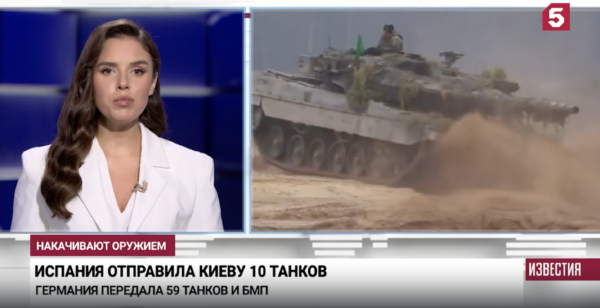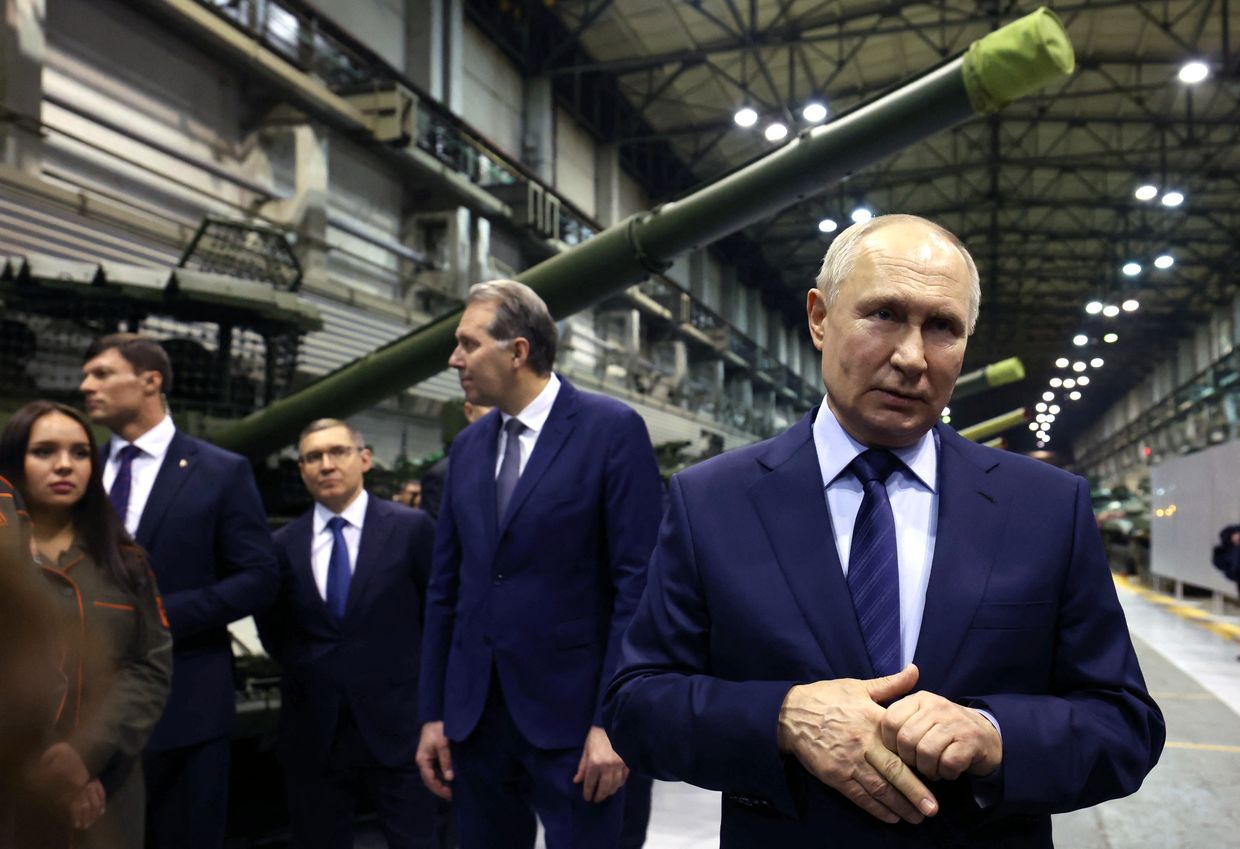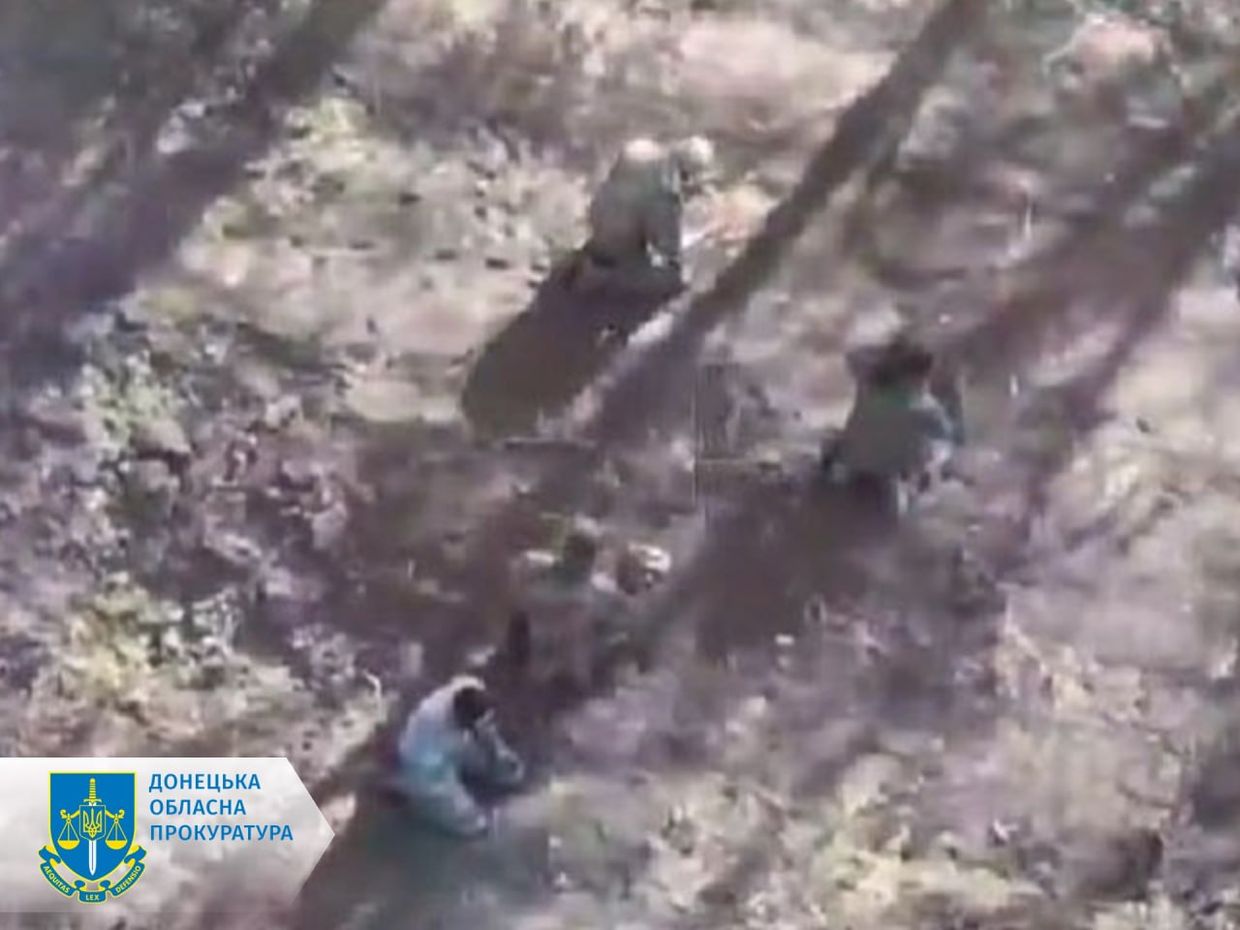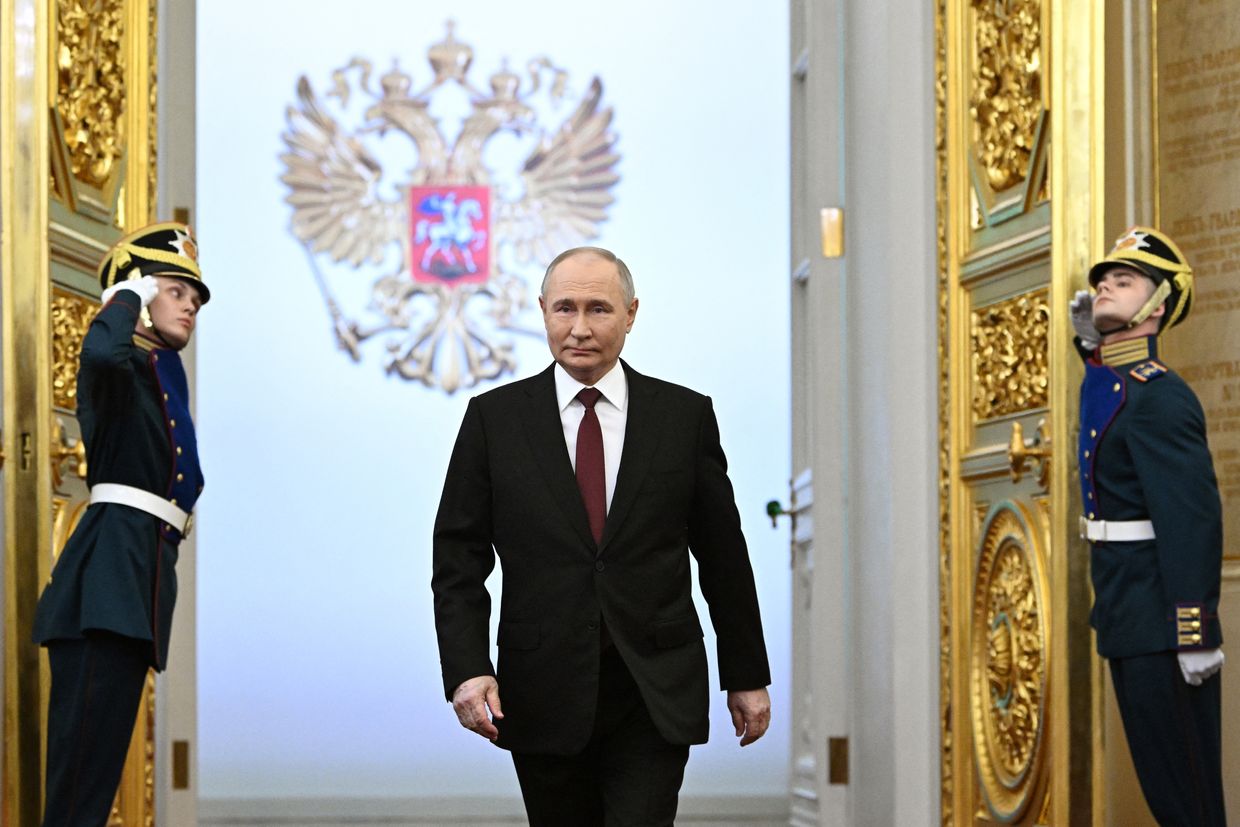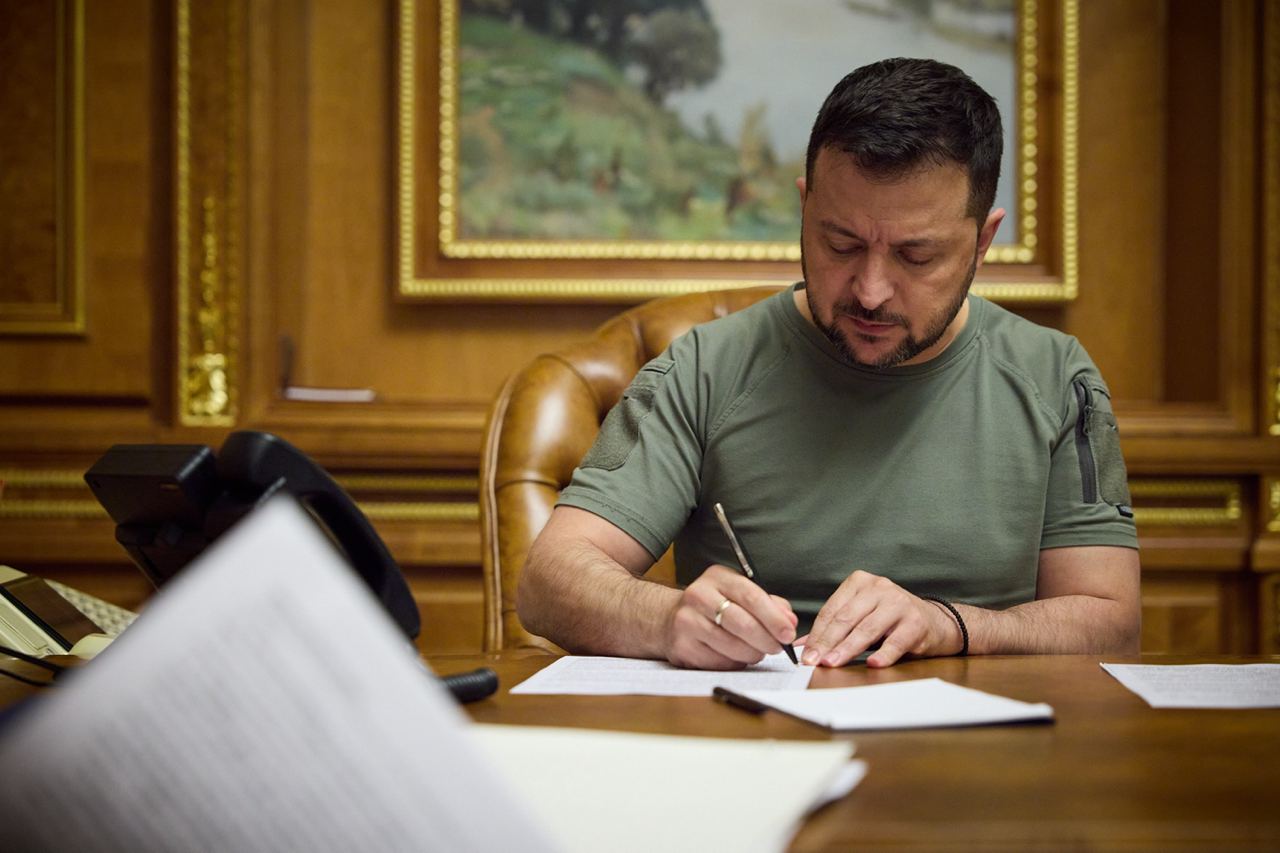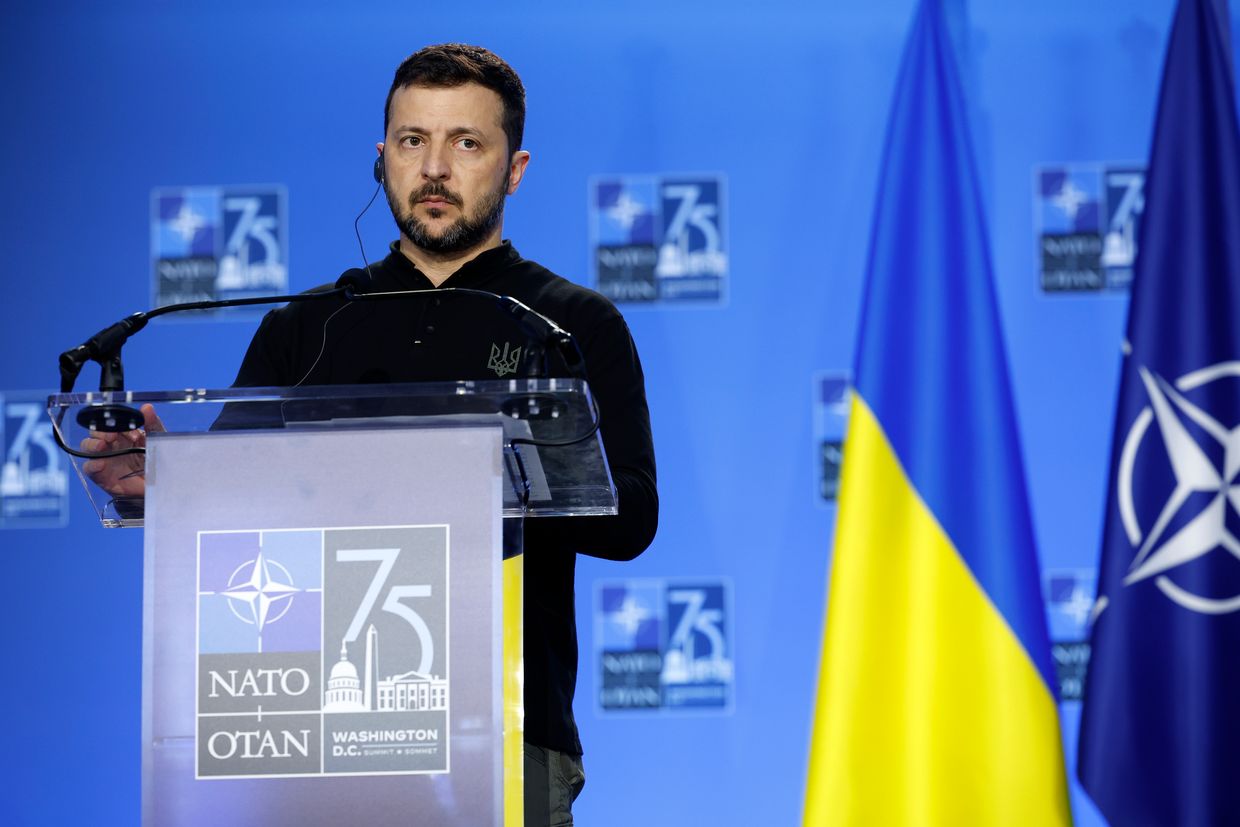Let’s have a clear-eyed review of the ‘red lines’ Moscow has sought to draw since it launched its full-scale invasion of Ukraine on 24 February 2022. We will explore how pro-Kremlin mouthpieces deployed anxiety-inducing disinformation in an attempt to prop them up and see what happened when those supporting Ukraine saw through the deceit of these ‘red lines’.
Late 2021: Preparing for an invasion
At the end of 2021, Russia, having amassed 150,000 troops on the Ukrainian border and increasing its level of aggression, issued an ultimatum. Calling it a ‘draft agreement with NATO and the United States on mutual security guarantees’, Russia essentially demanded that Western countries surrender all of Eastern Europe to Russia’s sphere of influence. Among other things, the Kremlin demanded that Western countries surrender Ukraine to Russia to be torn apart. Even more bizarrely, Russia also demanded that NATO ‘pack its bags’ and return to its 1997 borders. This shows the Kremlin’s utter disregard for the sovereignty of the Czech Republic, Hungary, Poland, Estonia, Bulgaria, Lithuania, Latvia, Romania, Slovakia, Slovenia, Albania, Croatia, and Montenegro, and for these countries’ right to make their own security arrangements and foreign policy decisions.
Despite Russia’s aggressive rhetoric with its ‘red lines’ and demands designed to be unfulfillable, three rounds of negotiations between the US, NATO, the OSCE and Russia took place over four days in January 2022. The Kremlin’s underhanded blackmail, including spreading disinformation about alleged NATO expansion crossing a ‘red line’ for Russia, did not work and the parties did not reach agreement on most issues. Then Russia threatened ‘an inevitable deterioration in the security situation of all states without exception’. The Kremlin stayed true to its word when it attacked Ukraine in the early morning of 24 February 2022, unleashing the largest war in Europe since WWII.
2022: The fall of the first ‘red line’
However, Ukraine did not surrender in the first months of the war, as the Kremlin had hoped, and its allies began to openly test the Kremlin’s ‘red lines’ by supplying more modern and powerful weapons to Ukraine. And if in the first months the allies provided Ukraine with light defensive weapons, in April 2022, at the first meeting of the Ukraine Defence Contact Group, the situation turned around and Ukraine received the first batch of heavy weapons and anti-aircraft equipment from its partners.
Russia reacted extremely nervously, stating that Ukraine’s allies were ‘taking advantage of the moment and the open cash register of the United States, ready to sell old weapons and scrap metal to Ukraine’. In May 2022, Deputy Chairman of the Russian Security Council Dmitry Medvedev announced ‘the possibility of the conflict with NATO escalating into a nuclear war’, and in June 2022, the Russian Foreign Ministry directly threatened a nuclear strike on Poland. As usual, these top-line messages were reinforced by a slew of pro-Kremlin disinformation designed to create anxiety. However, the fact remains: Russia’s first ‘red line’ – sending Western military aid to Ukraine – was a mere phantasm to dissuade the democratic world from helping Ukraine.
In October 2022, Russia began to target critical infrastructure in Ukraine, seeking to leave civilians without electricity, water and heat in the winter. In response, the allies decided to transfer modern air defence systems to Ukraine, including US-made Patriot mobile interceptor surface-to-air missile (SAM) systems. The Kremlin reacted on cue, blaming NATO countries for ‘playing with fire’, and once again waved its nuclear cudgel. But since this ‘red line’ – the West providing lethal military equipment to Ukraine – also fell, the pro-Kremlin disinformation outlets quickly tried to backpedal by claiming that these Western armaments were junk and no match for mighty Russia.
2023: From defensive to offensive
Until early 2023, Ukraine received mostly defensive weapons from its allies to contain the Russian offensive. But when the Ukrainian Armed Forces managed to liberate cities in the Kharkiv and Kherson regions, the allies made another important decision: The so-called tank coalition was created, to transfer a significant amount of heavy offensive equipment to Ukraine, including tanks such as the British Challenger, the American Abrams, and the German Leopard.
The Kremlin responded with a barrage of criticism and framed the supply of heavy weapons to Ukraine as proof that the West had ‘launched a war against Russia’ and that the countries of the tank coalition were aiding ‘Nazism’. The coalition had made an ‘extremely dangerous decision’ and Germany was ‘refusing historical responsibility towards Russia, which stems from the crimes of Nazism during the Great Patriotic War’. But the West delivered the tanks, and the Kremlin’s third ‘red line’ – no Western tanks on Ukrainian soil – fell quickly. And on cue, following the same pattern as before, the pro-Kremlin disinformation ecosystem pivoted from maintaining this ‘red line’ to ridiculing Western support to Ukraine and dismissing any impact of Western-delivered tanks on the battlefield.
Red and redder
The Kremlin’s main ‘red line’ is an encroachment on the country’s sovereignty. True to its imperialist nature, Russia includes the occupied territories of Ukraine in this definition. According to previous Kremlin statements, strikes by the Ukrainian Armed Forces on the captured Crimea or Donetsk regions of Ukraine would provoke the Russians to take active retaliatory measures, including the option of using nuclear weapons. But this turned out to be not quite true.
In October 2023, the United States transferred modified ATACMS missiles, capable of hitting targets at a distance of 165 kilometres, to Ukraine. Ukraine successfully used ATACMS for the first time in October against Russian targets in eastern Ukraine. This was followed by the delivery in early 2024 of a longer-range version of the ATACMS missile, with a range of up to 300 kilometres. And again, Ukraine hit Russian military facilities in the occupied territories.
The Kremlin, as usual, called it an ‘escalation’. But Putin himself, looking at the floor and nervously waving his arms, suddenly declared that ‘Western missiles are in no way capable of changing the situation on the contact line’. And not a single comment about the ‘collective West’ encroaching on Russian sovereignty. A rather calm reaction, considering that the Kremlin stubbornly considers the Ukrainian occupied territories to be part of Russia, to which the Russian Constitution applies.
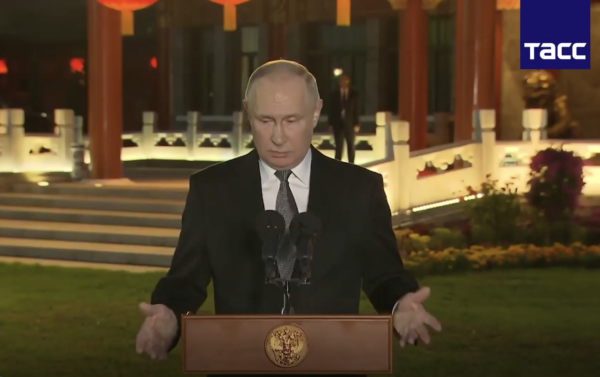
In the same way, pro-Kremlin disinformation outlets threatened the entire world with escalation and nuclear war during Ukraine’s lengthy negotiations with its allies on the transfer of F-16 fighter jets to the Ukrainian Armed Forces. But the Kremlin’s threats were empty, and Kremlin narratives about the ‘useless’ military aid of its allies failed: Ukraine received the first aircraft in the summer of 2024. The Kremlin’s disinformation mouthpieces changed their tune and now claimed that the F-16s delivered to Ukraine only ‘improved’ the image of Russia and Putin. And once again, more of Russia’s fabled ‘red lines’ – using ATACMS to strike targets in occupied territories in Ukraine or delivering F-16 to the Ukrainian Air Force – turned out to be a shade of faded pink at best.
Sovereign territory of Russia
The Kursk operation of the Armed Forces of Ukraine, which launched a combat operation on Russian territory on 6 August 2024, once again proved the malleability of Russia’s ‘red lines’. The embarrassment was palpable, but the Kremlin could not find words for a long time, trying to keep a poker face when dealt a bad hand.
Pro-Kremlin disinformation outlets actively searched for suitable terms to frame what was happening, comparing the border breach with the World War II Battle of Kursk and appealing to the patriotism of Russians. And, of course, referring to ‘NATO mercenaries’ who had broken through the Russian border (read more in this EUvsDisinfo article).
The Ukrainian operation in the Kursk region proved the emptiness of the Kremlin’s threats. Another ‘red line’ – physical attack on Russian territory and encroachment of Russia’s sovereignty – had been crossed – and yet again, nothing happened.
Long-range missiles and a nuclear cudgel
Like a boastful bully issuing louder and louder threats to hide its own cowardice, the Kremlin continues to draw more and more ‘red lines’. In response to Western deliberations on lifting restrictions for Ukraine on long-range strikes using Western-supplied weapons, Putin quite predictably stated at a meeting of the Russian Security Council that this was ‘unacceptable’ and that Russia needed to lower the threshold for using nuclear weapons.
‘Now, aggression against Russia by any non-nuclear state, but with the support of a nuclear state, is proposed to be considered as their joint attack on Russia’, Putin said, unequivocally drawing another ‘red line.
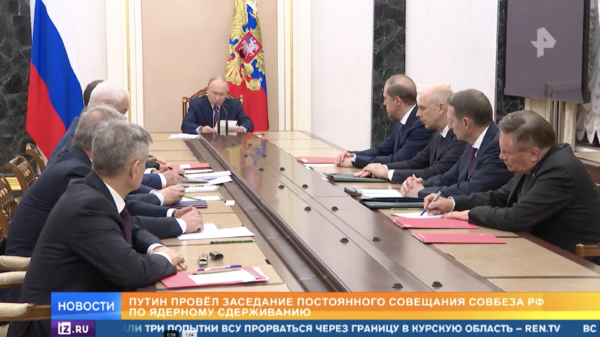
Playing the nuclear card is the most potent tool of dissuasion in Moscow’s arsenal. Using pro-Kremlin disinformation outlets to amplify Putin’s nuclear sabre-rattling is an attempt to dissuade Ukraine’s allies from giving it the means to defend itself. As before, the Kremlin seeks to once again rewrite its surprisingly flexible ‘red lines’ which Moscow has been drawing since Russia launched a full-scale invasion of Ukraine in 2022.
We see how the Kremlin’s ‘red lines’ have shifted time and again, and how its disinformation apparatus enables the malleability of these ‘red lines’. Russia’s goal is evidently to intimidate the free world and force Ukraine’s allies to limit their aid. And so Russia resorts to escalatory rhetoric, proclaiming ‘red lines’ and even disinformation-enabled nuclear blackmail to try to bully the world. Don’t be deceived.
The post Fifty shades of the Kremlin’s ‘red lines’ appeared first on EUvsDisinfo.
Content Original Link:
https://euvsdisinfo.eu/fifty-shades-of-the-kremlins-red-lines/


